Hello everyone, I’m Michael Zhang, an avid traveler with a passion for deep, immersive experiences. With a wealth of international travel experience, I am fascinated by uncovering the hidden corners of history and the intricate details of different cultures—especially those of my beloved homeland, China. Today, I invite you to join me in exploring Beijing’s hutongs, a network of ancient alleys that have witnessed centuries of life amid the bustle of a dynamic city. In this article, I’ll guide you through the history, architecture, unique attractions, and fascinating ways to explore these hutongs. I hope that here, you’ll feel the unique charm of Beijing’s hutongs and the rich cultural heritage they represent.
What is a Hutong in China?
A hutong is a narrow street or alley that runs between main roads in urban and rural areas, often just wide enough for a single car to pass. Hutongs are integral to Beijing’s transportation network but are also a distinct part of the city’s unique character. Depending on their accessibility, hutongs are classified as “dead-end” (with only one entrance that opens into residential areas) or “through-street” hutongs (which connect two or more main roads). While hutongs are especially famous in Beijing, similar streets in Suzhou are known as “xiangnongs.”
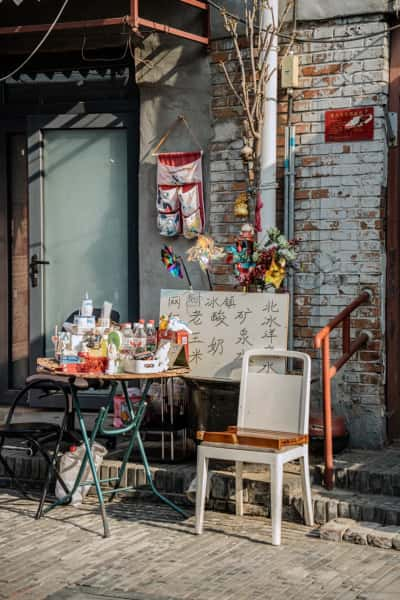
Where Does the Name Hutong Come From?
The term “hutong” originated from the Mongolian word “gudum,” which means “water well.” During the Yuan Dynasty, nearly every courtyard residence in Beijing had its own well, which symbolized community and life. As the Yuan capital was designed, rows of residential streets became known as “huduon,” or “streets of wells” in Mongolian, which evolved over time into “hutong,” the term still used today.
Where Can You Find Hutongs?
Beijing is home to thousands of hutongs, with most of them dating back to the Yuan, Ming, and Qing Dynasties in Chinese history. Many of these hutongs were established during the 13th century Yuan Dynasty. Typically, hutongs run east to west and are generally less than nine meters wide. The structures on either side of a hutong are often siheyuan, or courtyard houses, which are arranged in a four-sided, symmetrical layout. These courtyard houses, positioned side by side with narrow alleyways in between, create the interconnected passageways that define hutong neighborhoods.
In the following sections, I’ll highlight some of the best hutongs and routes for you to explore, giving you a taste of Beijing’s history, architecture, and local life.
Beijing Hutongs: The Record-Holders
Some hutongs in Beijing stand out for their unique characteristics, holding titles for their extraordinary features:
- Longest Hutong: Dongjiaominxiang and Xijiaominxiang Hutongs together span an impressive 6.5 kilometers.
- Shortest Hutong: Yichidajie is the shortest, stretching just 15.2 meters.
- Widest Hutong: Lingjing Hutong, with a maximum width of 32.18 meters, is the broadest.
- Narrowest Hutong: Qianshi Hutong in the Dashilar area is the narrowest, with a width of only 0.44 meters at its slimmest point.
- Hutong with Most Turns: Jiuwan Hutong, true to its name, has 19 twists and turns.
- Oldest Hutong: Zhuanta Hutong, dating back to the Yuan Dynasty, is one of Beijing’s oldest.
How Does a Hutong Get Its Name?
Hutong names in Beijing have fascinating origins. Here are some common ways they’re named, along with examples that illustrate each method:
Descriptive Landmarks
Many hutongs are named after distinctive physical features, showcasing Beijing locals’ straightforward and humorous nature. For instance, a wider hutong might simply be called “Wide Street” (Kuanjie), while a narrow one is called “Narrow Lane” (Jiadao). Similarly, hutongs with a unique curve or shape often reflect that in their names, such as “Box Lane” (Hezi) for a rectangular alley or “Trumpet Alley” (Xiaolaba) for a lane that starts narrow and widens. Others like Tangzi Hutong, Shihu Hutong, and Baishu Hutong (now Baishun Hutong) are named after local landmarks or memorable features.
Geographic Landmarks
Historical structures like city gates, temples, and bridges were popular markers for naming hutongs. Examples include Xizhimen Inner and Outer Streets, Qian and Houyuanensi Hutongs, and the famous Dashilar, which means “big fence” in the Beijing dialect. These names often referenced significant landmarks, helping people locate the hutongs with ease.
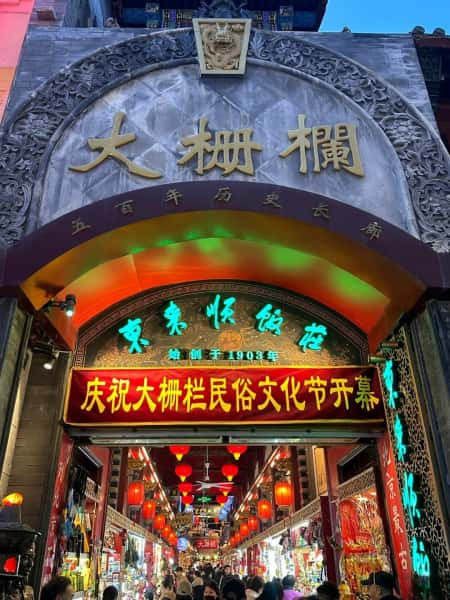
Trees and Plants
Some hutongs take their names from trees commonly found in the area. For instance, Liushu Hutong (Willow Tree Hutong), Zaolin Hutong (Date Forest Hutong), and Chunsu Hutong (Ailanthus Hutong) all reflect the local flora.
Direction and Location
To make navigation easier, hutongs often incorporate directional indicators, such as east, west, south, and north, into their names. Examples include Dongtangen Hutong, Xihongmen Hutong, Nan Yueya’er Hutong, and Bei Banbi Hutong. These names make it easier to identify each hutong’s relative position within the neighborhood.
Beijing Dialects
Local dialects and slang often influence hutong names, adding a playful touch to their identities. Names like Beiyin’er Hutong, Qudeng’er Hutong, and Gagahutong carry strong Beijing accents, making them truly unique to the city.
Auspicious Wishes
Hutongs often bear names that convey hopes for prosperity, happiness, and longevity. For example, “Lucky Alley” (Xiqing Hutong), “Joyful Alley” (Xique Hutong), and “Longevity Alley” (Shouzhang Hutong) reflect the optimistic spirit of local residents. Other names like Ping’an (Peaceful) and Anfu (Fortunate) Hutongs showcase residents’ aspirations for peace and well-being.
Government or Official Institutions
Certain hutongs take their names from government offices and official residences, such as Lumicang Hutong, Xixiku Hutong, and Gongyuan Hutong. Some are named after titles and offices held by notable residents, such as Yongkang Hou Hutong (named for the title of Yongkang Marquis) and Wuding Hou Hutong.
History of Hutongs in China
Hutongs are an ancient and iconic feature of Beijing, dating back to the Yuan Dynasty. At that time, the capital city, known as Dadu, was designed in a grid layout inspired by the principles of the Bagua, a mystical symbol. This layout organized neighborhoods like a checkerboard, and hutongs naturally developed as narrow pathways connecting these residential areas.
During the Ming Dynasty, Beijing underwent further planning, and hutongs became even more standardized. By the Qing Dynasty, hutongs had evolved into a central part of Beijing’s cultural identity, with many distinct hutongs appearing across the city.
In the years following China’s opening to the world, Beijing’s hutongs have seen both preservation and modernization efforts. Some historically significant hutongs have been designated as protected heritage sites, becoming symbolic of the city’s cultural legacy.
Top 10 Beijing Hutongs to Visit
Here are ten hutongs in Beijing you won’t want to miss. Each offers a unique glimpse into traditional and modern Chinese culture:
1. Nanluoguxiang
- Location: Dongcheng District, Beijing
- Open: All day
- Highlights: One of Beijing’s oldest hutongs, Nanluoguxiang combines old Beijing charm with a modern, artsy vibe. This hutong is filled with cafes, boutique shops, and creative spaces, making it perfect for experiencing both traditional life and trendy culture.
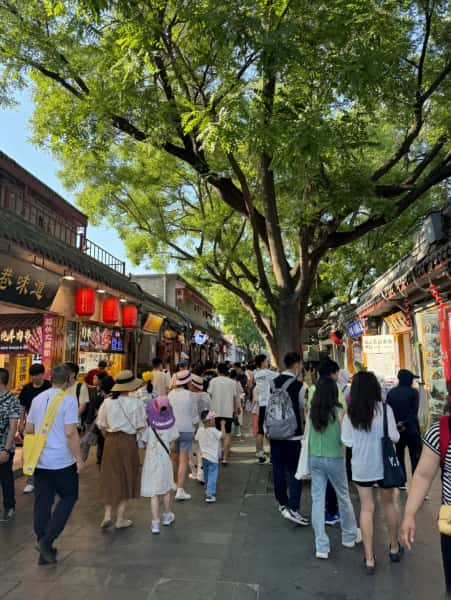
2. Yandai Xiejie
- Location: Qianhai East, Xicheng District, Beijing
- Open: All day
- Highlights: Known for its unique slanted shape, Yandai Xiejie offers a mix of antique shops, tea houses, and bookstores. It’s a scenic path that connects Shichahai and the Drum Tower, making it a popular spot for capturing Beijing’s traditional atmosphere.

3. Mao’er Hutong
- Location: Near Nanluoguxiang, Dongcheng District, Beijing
- Open: All day
- Highlights: Mao’er Hutong is loved for its authentic hutong feel and traditional siheyuan (courtyard houses). Visitors can get a taste of old Beijing’s charm here, and it’s a popular spot for photos.
4. Guozijian Street
- Location: Guozijian Street, Dongcheng District, Beijing
- Open: All day
- Highlights: Home to the Confucius Temple and the Imperial College, Guozijian Street is rich in Confucian heritage. The street and its surroundings offer a serene atmosphere with deep historical roots, making it ideal for learning about traditional Chinese culture.
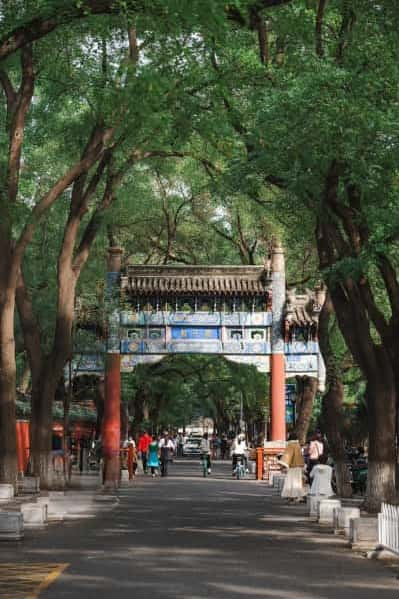
5. Liulichang
- Location: Liulichang West Street, Xicheng District, Beijing
- Open: Most shops open from 10:00 am to 6:00 pm
- Highlights: Liulichang is a hub for artists and scholars, known for its shops selling ancient books, paintings, and traditional art supplies. It’s a great place to appreciate Chinese art and explore the world of classic literature.
6. Jinyu Hutong
- Location: Near Wangfujing, Dongcheng District, Beijing
- Open: All day
- Highlights: With its classic architecture and quiet ambiance, Jinyu Hutong transports visitors back to old Beijing. It’s a charming hidden lane, perfect for those seeking a peaceful stroll through history.
7. Dongjiaominxiang
- Location: Dongcheng District, Beijing
- Open: All day
- Highlights: As the longest hutong in Beijing, Dongjiaominxiang was once the location of foreign embassies. The architecture here combines Eastern and Western styles, making it a fascinating place to see the blend of historical influences.
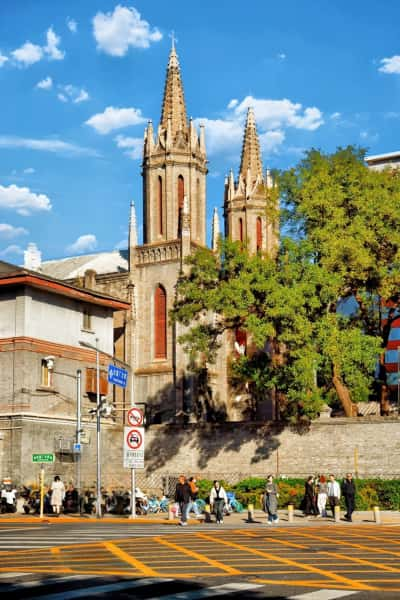
8. Xijiaominxiang
- Location: Xicheng District, Beijing
- Open: All day
- Highlights: Adjacent to Dongjiaominxiang, Xijiaominxiang was a diplomatic center in the late Qing Dynasty. Today, it still preserves many historical buildings that provide insight into Beijing’s past.
9. Ju’er Hutong
- Location: Near Beiluoguxiang, Dongcheng District, Beijing
- Open: All day
- Highlights: Known for its calm, picturesque environment, Ju’er Hutong is an ideal place for visitors to experience the slower pace of hutong life. It’s perfect for those who want to see traditional courtyard homes and enjoy a laid-back atmosphere.
10. Bada Hutong
- Location: Near Dashilar, Xicheng District, Beijing
- Open: All day
- Highlights: Bada Hutong is steeped in history and known for its colorful past. Though once famous for its nightlife, it’s now a preserved site with many historic buildings, making it a must-visit for those interested in the stories of old Beijing.
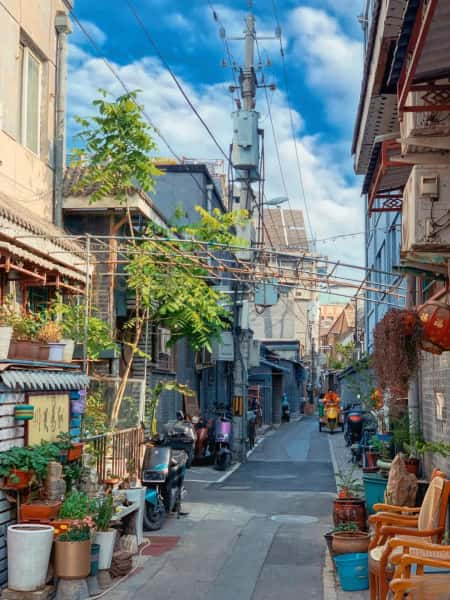
Top Things to Do in Beijing Hutongs
Hutong Culture Walks
The hutongs in Beijing’s Dongcheng and Xicheng Districts offer the deepest insight into the city’s local charm. Strolling through hutongs like those in the Dongsi area gives you a taste of old Beijing life, architecture, and the historical atmosphere dating back to the Yuan, Ming, and Qing Dynasties. This area is ideal for learning about courtyard houses (siheyuan) and the native plants of the hutongs.
- Exploring Traditional Gates: Siheyuan gates vary by level and type, with distinctions like Wangfu (Royal Mansion), Guangliang, and Jinmen gates. The homes of the Che Prince and Wang Mintong in Dongsi are examples of these gate styles.
- Visiting the Hutong Museum: Located on Dongsi Sitiao, the Hutong Museum showcases traditional siheyuan architecture and features intricate designs like the hanging flower gate. The museum also offers a souvenir stamp station for travelers.
- Discovering Hutong Flora: Common plants in hutongs include locust trees, jujube, gingko, and the native Chinese toon tree. Residents grow an array of flowers and vegetables, from peppers to okra.
Suggested Route: Dongsi Santiao (Che Prince’s Residence) ➔ Dongsi Sitiao (Hutong Museum) ➔ Dongsi Liutiao (Gardening Station)
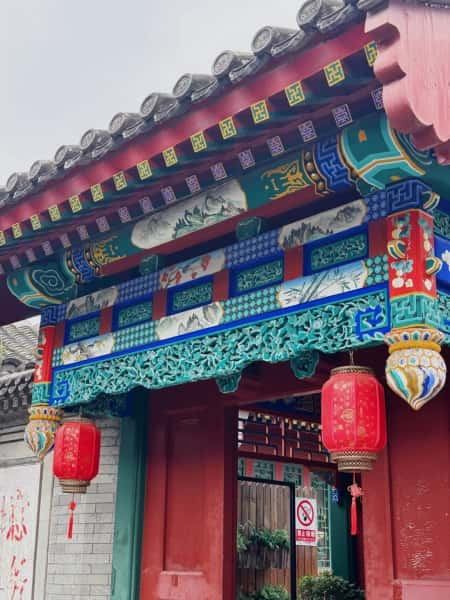
Biking Through the Hutongs
Riding a shared bike through Beijing’s hutongs is an excellent way to experience the charm of old Beijing up close. Here are a few routes, each with its own unique highlights:
- Route 1: Into the Heart of Bustling Beijing (6.2 km)
- Route: Beihai North ➔ Shichahai ➔ Drum Tower ➔ Song Qingling’s Former Residence ➔ Prince Gong’s Mansion ➔ Beihai North
- Highlights: Switch between bustling streets and peaceful alleys to experience the dynamic mix of modern city life and historic culture.
- Route 2: Night Ride on Chang’an Avenue (6.5 km)
- Route: Wangfujing ➔ East Chang’an Avenue ➔ South Pool Alley ➔ North Pool Alley ➔ West Chang’an Avenue
- Highlights: View the illuminated beauty of Tiananmen Square at night and soak in the magnificent mix of ancient and modern. Note: the Forbidden City is unlit after dark, so bring a flashlight if needed.
- Route 3: Exploring Hutong Life (8 km)
- Route: Imperial College ➔ Nanluoguxiang ➔ Mao’er Hutong ➔ Jingshan Park ➔ Forbidden City
- Highlights: Get a real sense of local Beijing life—from the smoke rising from courtyard homes to the calls of street vendors, each scene embodies the warmth of traditional city life.
- Route 4: Academic Circle (23 km)
- Route: National Library ➔ Beijing Foreign Studies University ➔ Renmin University ➔ Peking University ➔ Tsinghua University ➔ Beihang University ➔ National Library
- Highlights: A route that passes some of Beijing’s most prestigious universities, offering a taste of campus life and popular Beijing street food around each school.
- Route 5: Cycling the Second Ring Road (38 km)
- Route: Ditan ➔ Ritan ➔ Longtan Lake ➔ Temple of Heaven ➔ Taoranting ➔ Grand View Garden ➔ Yuetan
- Highlights: This route circles the Second Ring Road, with scenic stops at Beijing’s parks—a peaceful way to enjoy the city’s natural spaces and unwind.
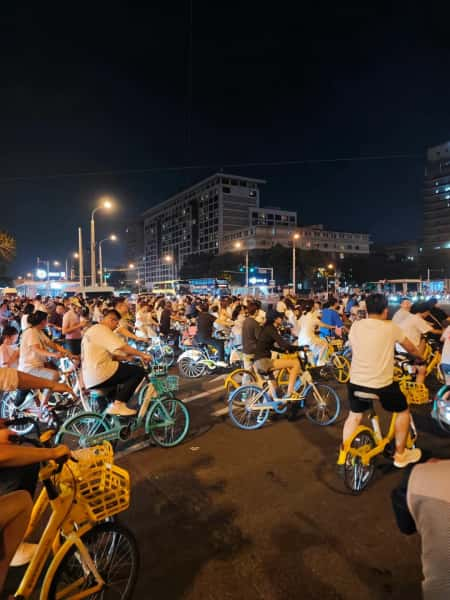
Hutong Walking Tours
These hutong walking routes reveal Beijing’s hidden beauty and stories. You can choose a route based on your hotel’s location for the most convenient experience.
- Route 1: Sanjing Hutong ➔ Yangwei Hutong ➔ Tea Hutong ➔ Qudeng Hutong ➔ Dashilar West Street ➔ Cherry Slant Street ➔ Iron Tree Slant Street ➔ Liulichang Street ➔ Beijing Huguang Guild Hall ➔ Ji Xiaolan’s Residence
- Route 2: Shichahai A2 Exit ➔ Yandai Xiejie ➔ Drum Tower ➔ Xiaoshabei Hutong ➔ Yinding Bridge ➔ Sugar House Café ➔ Deheyou Wharf ➔ Lotus Wharf ➔ Front Sea West Bank ➔ Fire Temple ➔ Metro Station
- Route 3: Yonghegong Lama Temple Station Exit F ➔ Confucius Temple ➔ Imperial College ➔ Wudaoying Hutong ➔ He Burger ➔ School (livehouse) ➔ Sanyuanmeiyuan ➔ Beiluoguxiang
- Route 4: Gulou Dajie Metro Station Exit G ➔ Yu Ge Hutong ➔ Baochao Hutong ➔ Huayuan Hutong ➔ Beiluoguxiang ➔ Liulisi Hutong
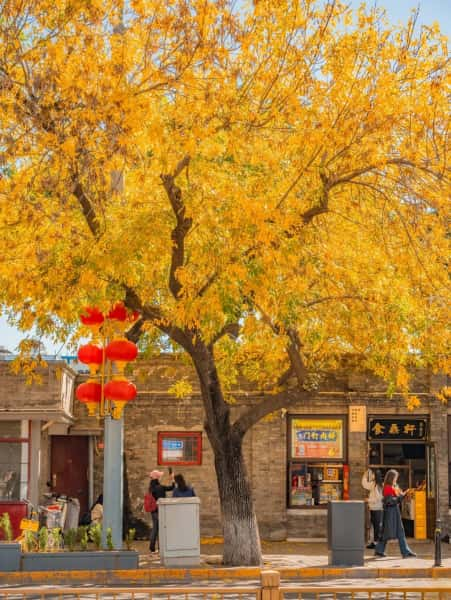
Tips for Visiting Beijing’s Hutongs
- Wear Comfortable Shoes: Hutong streets are often paved with stone and can require a lot of walking or biking. Good shoes will help you enjoy your visit even more.
- Stay Protected from the Sun: Beijing’s sun can be strong, especially in summer. Bring sunscreen, a hat, and sunglasses to avoid sunburn.
- Explore During the Day: While Beijing is generally very safe, some hutong areas are dimly lit. For a safer experience, visit during daylight hours or when there’s plenty of natural light.
- Respect Local Residents: Hutongs are home to many locals. Be mindful when taking photos, avoiding direct shots of private doors or courtyards, and try to keep noise levels down.
- Bring Cash or Mobile Payment Options: Some small shops or stalls may not accept credit cards, so having some cash or mobile payment apps like Alipay or WeChat can make transactions easier.

 English (US)
English (US)  English (Hong Kong)
English (Hong Kong)  English (Malaysia)
English (Malaysia)  English (Singapore)
English (Singapore)  繁體中文
繁體中文 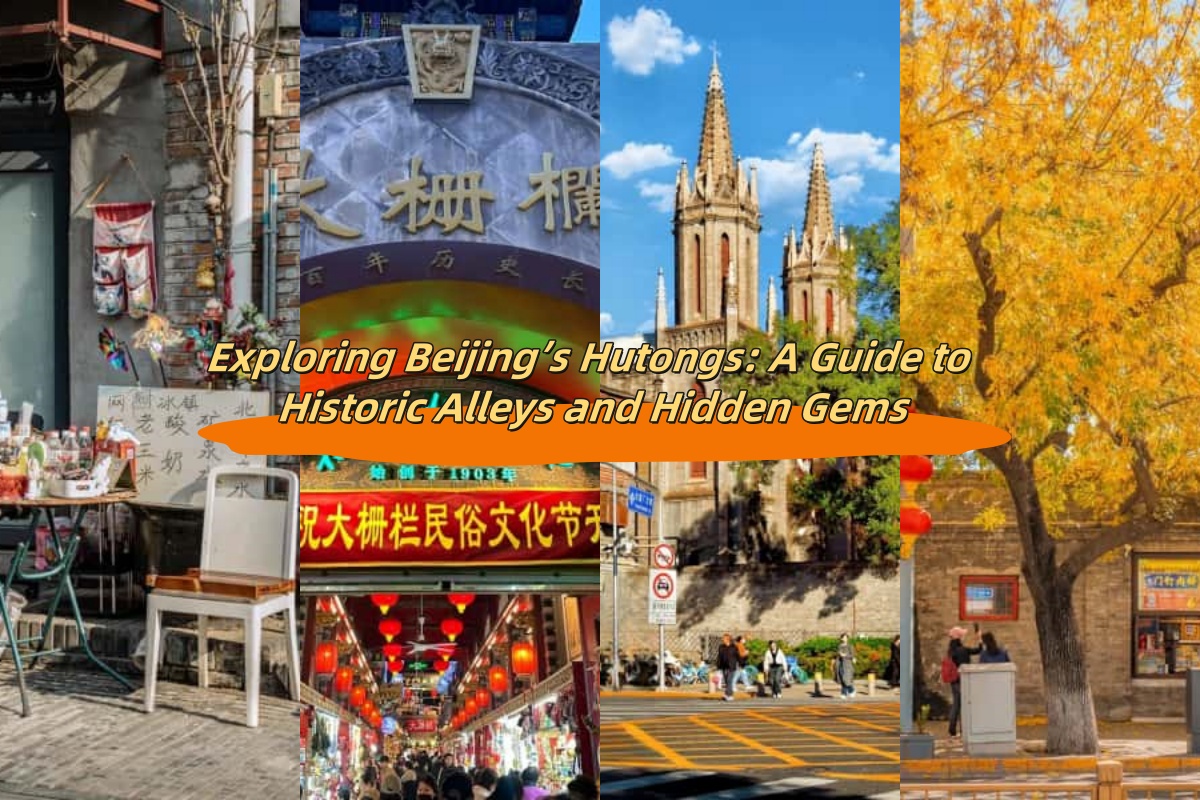
Comment (0)